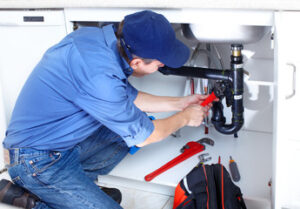Commercial Plumbing is the conveyance of liquids from one place to another for various applications. This involves using pipes, valves, plumbing fixtures, tanks, and other apparatuses.

Water pipes move drinking water from a main source to a user’s faucet. They may also be used to carry waste from one area to another. However, before you purchase a pipe for your home or business, it’s important to understand how the different types of pipes work.
Depending on your location, you will need to purchase a pipe that is appropriate for the type of water you are planning to use. This will impact the cost of your plumbing pipe. It’s also important to remember that all types of pipes will need to be replaced quickly when they begin to leak.
The piping material used for the main water supply line is typically galvanized steel. However, copper and lead were also used at one time. Copper has the advantage of being corrosion-resistant. Similarly, lead is a known health hazard.
Galvanized steel is still in use for the conveyance of water and wastewater. But, while it is resistant to rust and corrosion, it is a very heavy and expensive material to install.
A supply line is a part of the plumbing system. It is used to deliver water or gas to various fixtures. There are many different types of supply lines available. Some are flexible and easier to install than others.
For example, polyethylene cross-linked pipe is one of the most popular options for water supply lines. It is easy to install and doesn’t leach rust into the water. The polymer makes it durable and flexible enough to use with a wide variety of tools.
If you’re in the market for a new supply line, check with your local utility company to find out if it’s possible. You’ll need a permit to extend your line.
While there are other types of supply lines, a water hammer arrester is a great way to prevent a leak from damaging your faucets. These devices are designed to prevent a banging sound when an appliance shuts off. They also provide corrosion protection, which is a benefit to homeowners.
The purpose of a sump pump is to remove excess water from a basement. This can help to prevent flooding and damage to your property.
These pumps are powered by a battery or by water. The latter can be helpful in periods of heavy rain or snowmelt. However, this does come with its own disadvantages. Besides, it can also raise your water bill.
While there are many types of sump pumps on the market, it is important to know what kind is best for your home. It is also a good idea to inspect your sump pump regularly. If you find that it is making odd noises or running excessively long, it may be time to replace it.
A submersible sump pump is usually installed in a basement basin. Generally, it is less noisy than other types.
Some of these units use electronic control systems to control the amount of water that they discharge. When you need more water, the electronic switch will sense the water pressure inside the basin and trigger the action of the pump.
A fixture with a shut-off valve is a great way to control the flow of water. It can help you prevent flooding and make repairs faster. In some cases, they are even required by building codes.
There are several types of fixtures with a shut-off valve, each with its own advantages and disadvantages. You should consider the type you need and the location of the valve when choosing one.
Straight shut-off valves are typically used on water pipes coming out of walls or floors. They are often very inexpensive. These valves are commonly made of chrome-plated brass.
Angled fixture shut-off valves are used when pipes coming out of walls need to angle upward. This is particularly useful for water supply tubes that run to sink faucets and toilets.
These valves work by forcing a hollow needle or ball into the pipe. The inner gasket keeps the fitting in place. However, they aren’t very durable. Some building codes now discourage the use of these valves.
